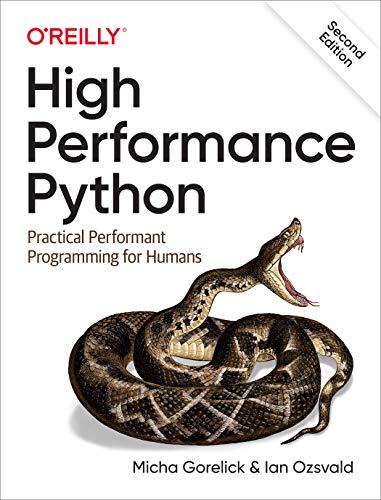High Performance Python: Practical Performant Programming for Humans Link to heading
Summary Link to heading
“High Performance Python: Practical Performant Programming for Humans” by Micha Gorelick and Ian Ozsvald is a technical guide focused on optimizing Python programs for better performance. The book addresses common bottlenecks encountered by developers and offers practical strategies to enhance the efficiency of Python code. It explores various aspects of performance, including profiling techniques, data structures, concurrency, and parallelism, as well as the use of external libraries and tools to enhance speed. This book is structured to guide readers from foundational concepts to advanced optimization techniques, making it suitable for a wide range of Python developers.
Review Link to heading
“High Performance Python” has been praised for its comprehensive approach toward performance optimization, providing clear explanations and real-world examples. One of the book’s strengths is its focus on practical implementations and its hands-on style, which helps readers apply learned concepts directly to their projects. However, some readers have noted that it may be dense for those not already familiar with performance programming or Python’s internals. Nevertheless, it serves as a valuable resource for developers interested in enhancing their Python applications’ speed and efficiency.
Key Takeaways Link to heading
- Profiling: Understanding and identifying performance bottlenecks in Python code using various profiling tools.
- Data Structures: Selecting the right data structures to optimize the performance of Python programs.
- Concurrency and Parallelism: Techniques for leveraging concurrency and parallelism to improve execution speed.
- Memory Management: Strategies for efficient memory usage to prevent unnecessary overhead and enhance performance.
- Leveraging Libraries: Using external libraries and tools, like NumPy and Cython, to achieve performance improvements.
Recommendation Link to heading
This book is highly recommended for intermediate to advanced Python developers who are looking to deepen their understanding of performance optimization techniques. It is particularly beneficial for those working on computationally intensive applications or requiring improved application responsiveness. Academics and professionals in data science, software engineering, or any field reliant on Python’s performance will find this resource valuable in enhancing their coding efficiency and effectiveness.
